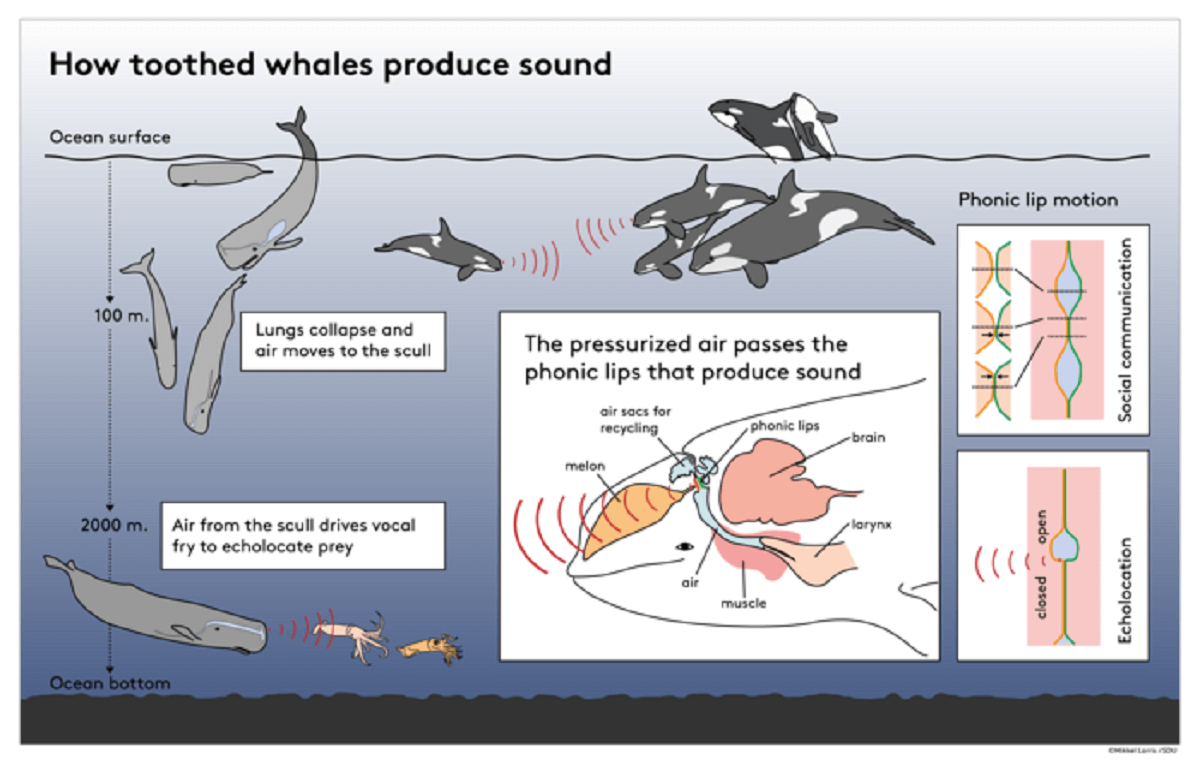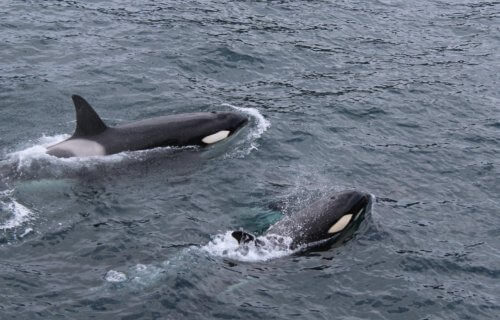ODENSE, Denmark — Killer whales and dolphins use a vocalization technique that may have you thinking a famous celebrity is near! According to researchers in Denmark, these marine animals produce low sounds by elongating syllables — a phenomenon known as “vocal fry.” While these mammals use these tones to hunt, they’re also common in American English and are associated with celebrities like Kim Kardashian and Katy Perry.
Researchers from the University of Southern Denmark identified this vocalization in orcas and dolphins, demonstrating that they utilize a nasal source to produce different levels of sounds, just like humans.
“During vocal fry, the vocal folds are only open for a very short time, and therefore it takes very little breathing air to use this register,” says lead author Professor Coen Elemans, a voice scientist in the Department of Biology, in a university release.
The study sheds light on the rich vocal repertoire of these intelligent apex predators. Toothed whales, including killer whales and dolphins, use vocal fry in their echolocation during hunting. They can dive as deep as 6,500 feet and catch more fish than the human fishing industry.
“During deep dives, all air is compressed to a tiny fraction of the volume on the surface,” explains co-author Professor Peter Madsen of Aarhus University. “Thus vocal fry allows whales access to the richest food niches on earth; the deep ocean.”

Previously, scientists believed that toothed whales produced sounds with their larynx, like other mammals. However, the researchers discovered that toothed whales use their noses to generate sound. They have an air-driven sound production system in their nose, which allows them to produce the loudest sounds of any animal on the planet. This unique adaptation enables them to communicate with other members of their species and locate and catch prey in the depths of the ocean.
“Evolution has moved it from the trachea into the nose, which allowed much higher driving pressures – up to 5 times what a trumpet player can generate – without damaging lung tissues,” says Prof. Madsen.
The study has significantly expanded our understanding of toothed whales’ communication and echolocation abilities. The researchers used advanced techniques, including high-speed camera tubes, to study these animals over a period of nearly 10 years. The discovery of vocal fry in orcas and dolphins highlights their remarkable evolutionary adaptations and contributes to our knowledge of their behavior and survival strategies in the ocean.
“While vocal fry may be controversial in humans and may be perceived as everything from annoying to authoritative, it doubtlessly made toothed whales an evolutionary success story,” says Prof. Elemans.
The findings are published in the journal Science.
South West News Service writer Mark Waghorn contributed to this report.

